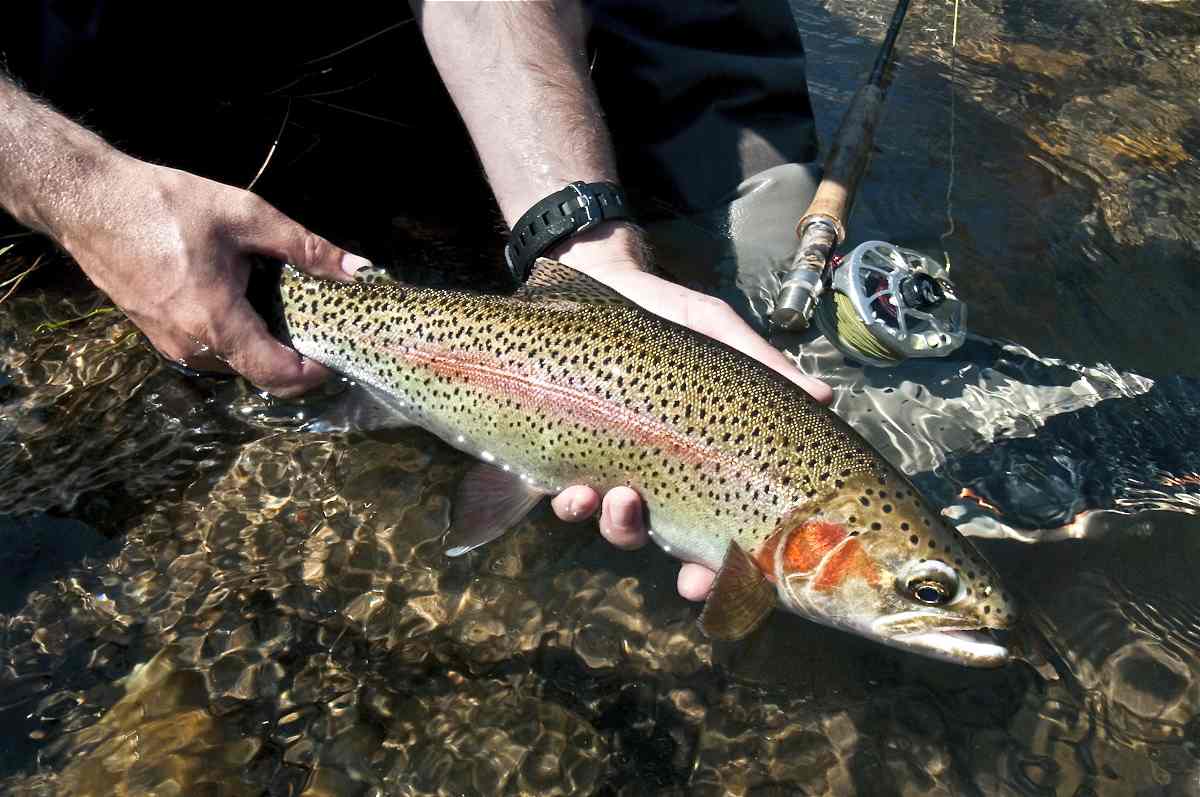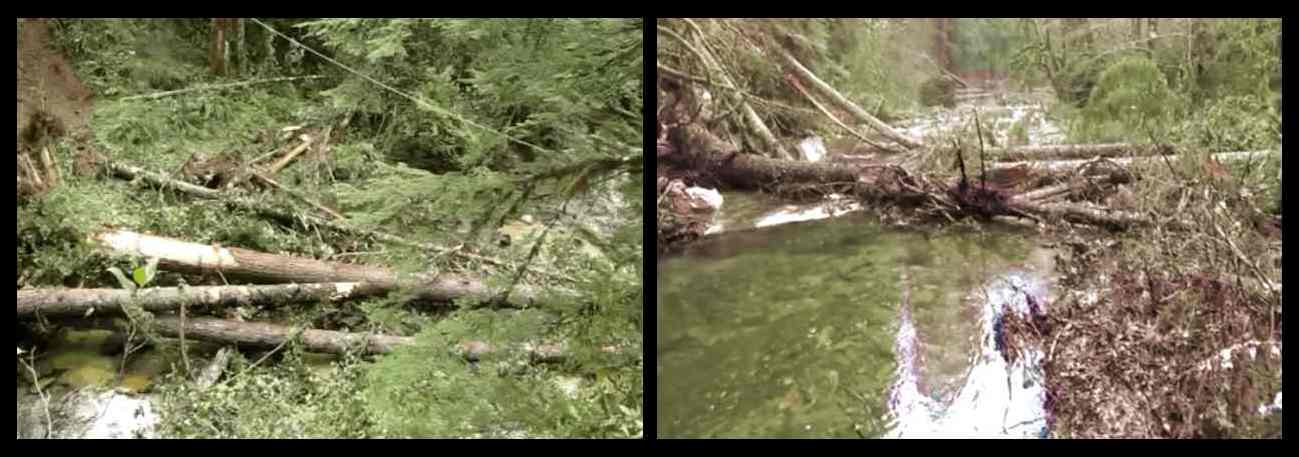Wood is Good!
Several years back, one of my favorite wild trout streams, only a few miles from my house, got slammed with tornados and high winds (from back to back hurricanes that had moved up from Florida). The aftermath from the strong storms, downed dozens, upon dozens of trees along the stream. I was heartbroken at first when I witnessed all the downed wood. The first thing I thought about, was how much critical shade the stream had lost from the destruction of the large stretches of tree canopy along its banks. And that made me nervous water temperatures would thereby increase significantly during the summer months, posing a real threat to year round survival of the wild trout that lived there. I wasn’t alone in my worries, as I quickly found out when I talked with my local fly fisherman in the area. The large majority were in total agreement. We thought the best thing we could do, was go in and strategically remove as much wood as we could to avoid massive silt build ups, which we thought at the time, was causing the stream flow to slow down, and not only contribute to warming the water, but also choking out the natural aquatic bug life. Looking back now, as a much more educated angler, I know see the massive influx of in-stream wood cover that was gifted to us by the hurricanes, was not an environmental catastrophe, but actually a blessing in disguise for our beloved trout stream.
The truth is, a key element that many of our trout streams lack, is enough in-stream lay downs and log jams provided by fallen trees during storms. They’re critical for maintaining and supporting a healthy ecosystem, because they provide cover for all sizes of fish, both mature and juvenile, and they also hold back gravel critical for spawning grounds, and leaf litter from being washed out during high flows. The natural obstructions that they provide, also help to create new riffles and pools, thereby decreasing the chances of long stretches of trout streams ending up running straight as an arrow, widening over time, and becoming too shallow and barren of sufficient trout habitat.
I recently ran across a video on The Caddis Fly: Oregon Fly Fishing Blog, that showcased the local DNR going in and creating manmade logjams. They did this by strategically pulling down trees with heavy equipment on a trout and salmon stream, that overtime had been almost completely flushed out down to bare bedrock over the years. The goal for the project was to improve habitat, stabilize and increase the amount of gravel to improve spawning habitat, and also increase the number of riffles and pools. The video hit home with me and made me ask the question, “Why aren’t we doing more of this across the United States on all of our cold-water watersheds?”
Please watch the short video, support their efforts if your financial resources permit, and at the very least, take the time to spread the word with your local anglers and TU groups, about the importance of in-stream wood in our fisheries. Yeah, the added wood in our streams and rivers will cause us to lose quite a few more flies in snags. However, the long-term health advantages of the ecosystems on our salmonid watersheds, by the increase in available wood cover, will end up paying back our fly fishing endeavors ten fold over time.
Keep it Reel,
Come fish with us in the Bahamas!
Kent Klewein Gink & Gasoline www.ginkandgasoline.com hookups@ginkandgasoline.com Sign Up For Our Weekly Newsletter!


Thank you for drawing attention to this important issue. I’ve watched for years as rivers have been “improved” by removing trees, overhanging branches and in-stream large woody debris to facilitate angling access and ease casting a fly. Fish populations tended to decline with an associated loss of spawning gravel. Finally gravel had to be tipped into the headwaters to replace gravel washed downstream by flood water.
Thanks. While fishing this year three very large trees crashed into the trout stream I was fishing, not 50 yards from where I was standing. All I could think was…..Holy Cow! That would have killed me. Let me get out of here. The wind was blowing up to 40 miles an hour. Then my next thought was what a mess that has made of that stretch. Maybe we could clear that out of the way? I guess nature takes better care then we realize. And for the record…………That has to be the most beautiful rainbow trout I have ever seen.
Good topic – it’s also true of lakes, in particular, lakes that have a lot of homes on them…and non-trout rivers for smallies, musky, pike…
Shorelines need downed trees and other cover to provide habitat.
Whether it be old beaver dams, downed trees, or root balls, I always focus on making some quality presentations in woody spots like those.
Like you alluded to, the circumstantial snags are hardly a problem relative to the many benefits of debris to fish and fishers.